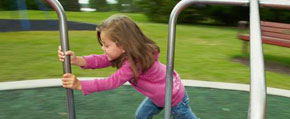We are pleased to announce an exciting new alliance between Active Living Research and GP RED to co-host and coordinate...
Walkable Streets: Pedestrian Behavior, Perceptions and Attitudes
Mehta, V. (2008). Walkable Streets: Pedestrian Behavior, Perceptions and Attitudes. Journal of Urbanism, 1(3), 217-245.
Urban designers are interested in the environmental qualities of places that make them better for walking, not only as settings for physical activity, but also as sensorial and social settings. Research in walkability lacks qualitative studies that address the microscale analyses of the environment. This paper is an empirical examination of the relationship of the physical, land‐use, and social characteristics of the environment at the microscale to people's behavior and perceptions toward walking. Using the data from surveys and interviews, this research emphasizes the integration of user perceptions and subjective measures to understand the impact of environmental characteristics on walking behavior on Main Streets. Adding to previous research, this study demonstrates the significance of social qualities in supporting walking. The findings expand our understanding of the hierarchy and criteria of walking needs and suggest that, given a safe and comfortable setting, people look for usefulness, sense of belonging and pleasurability as additional and distinct needs to enhance their walking experience.
Related Tools & Resources
STAY UP TO DATE
RECENTLY ADDED TOOLS & RESOURCES
MOVE! A BLOG ABOUT ACTIVE LIVING
The "Active Living Conference" aims to break down research and practice silos and...







